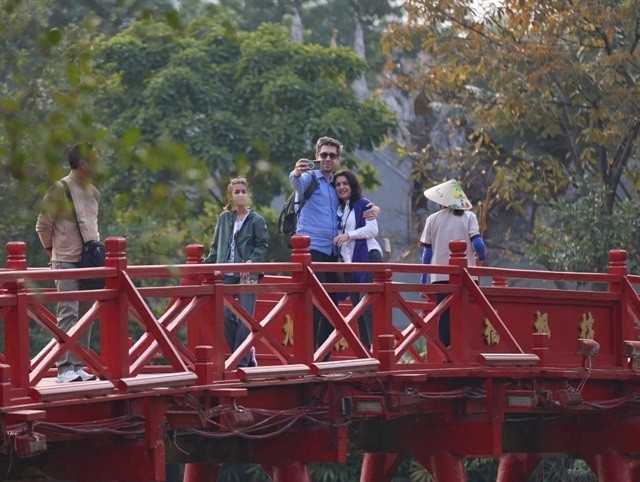This spring, visit the revolutionary base Pac Bo
(VNF) - Pac Bo was the base where President Ho Chi Minh worked on Vietnam's revolutionary course after returning to homeland after 30 years abroad. Nowadays, Pac Bo has officially been recognized as a special national relic site, a tourism destination which connects the past and present.
For Vietnamese people, visiting Pac Bo gives them an opportunity to learn more about the glorious tradition of the nation and to pay tribute to their beloved Uncle Ho for his great contributions to the nation.
For international visitors, visiting Pac Bo offers them a chance to gain insight of a legend: in a very difficult living condition in the mountainous area, President Ho Chi Minh still managed to led Vietnamese revolution to victory.
The Pac Bo National Special Relic Site is located just more than 50km off Cao Bang city, in Pac Bo village, Truong Ha commune, Quang Ha district.
If the schedule allows, it is recommended that visitors may stop at Cao Bang City for a night rest, before heading to Pac Bo on the next morning, since an open air and a cool and quiet atmosphere of this mountainous area, will melt away their tiredness.
On the way to the historic sight, visitors can behold the beauty of golden rice fields lying amid green mountains, small hamlets with dozens of houseson-stilts under the shade of towering clusters of peach trees, and the winding streams with thatch-roofed bridges.
Passing a hill where there is the newly-built Ho Chi Minh Museum, they will reach the historic site of Pac Bo.
The main historical relics consist of Pac Bo, Coc Bo, Bo Bam Cave, Lenin Stream, Karl Marx Mountain, Co Rac Ground and Khuoi Nam. The famous Coc Bo Cave is where President Ho Chi Minh established his residence and worked on Vietnam's revolutionary course after spending 30 years abroad to seek ways to liberate the country.

In early 1941, Uncle Ho started living and working in Coc Po cave in Pac Bo village right after returning to the homeland.Visiting this historical area, visitors will learn more about the great life of President Ho Chi Minh which is part- reflected through his optimistic revolutionary verses.


Uncle Ho named a stream located in front of Coc Po cave after Lenin. The stream is famous for its fairy-like scenes, with emerald water and lush green trees.

Not far from Coc Po cave is Ly Quoc Sung’s house where Uncle Ho lived and worked from January 28, 1941 to February 7, 1941

An orchard named after Uncle Ho. Four kinds of trees in the orchard have close links with Uncle Ho. Leaves of guava trees were used for water; leaves and flowers of pommelo trees were used for treatments while Uncle Ho was ill; mango and star apple trees, both are typical fruit trees of the South where Uncle Ho departed from while trying to find the way to save the country and where Uncle Ho always looked towards when his country was separated.
( VNF )
Recommended
 Travel
Travel
Strategies for Sustainable Growth of Vietnam’s Tourism from International Markets
 Travel
Travel
Vietnam Strengthens Its Presence On The Global Tourism Map
 Multimedia
Multimedia
Phong Nha-Ke Bang National Park Named Top Adventure Travel Site
 Travel
Travel
Vietnam Welcomes Record-High Number of International Visitors
 Travel
Travel
Luxury Train From Hanoi To Hai Phong To Be Launched In May
 Travel
Travel
Phong Nha Named Top Budget-Friendly Travel Destination for Spring 2025: Agoda
 Travel
Travel
Four Indian Films Introduced to Lao Cai Audience
 Travel
Travel
